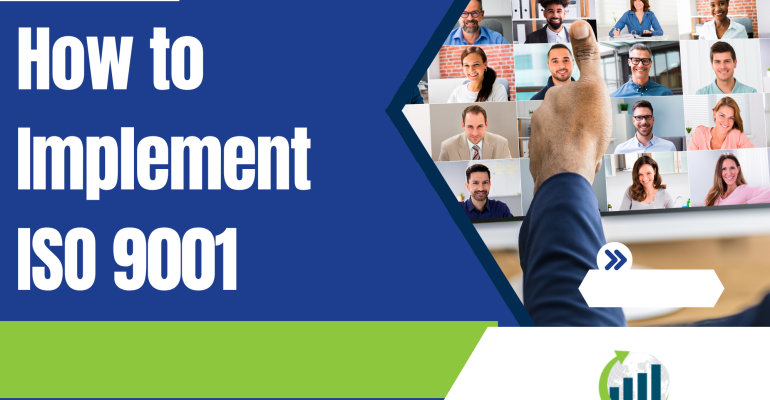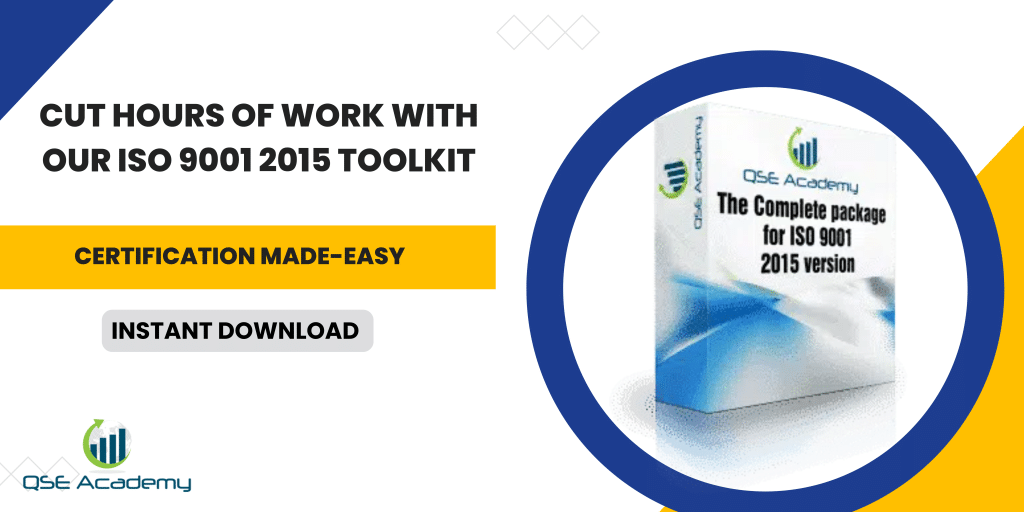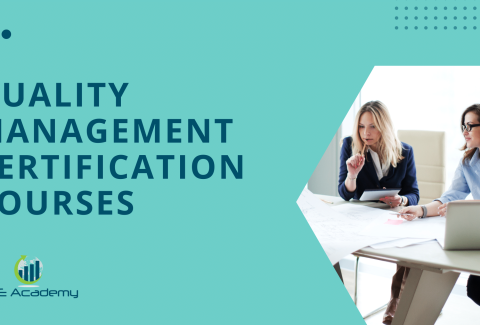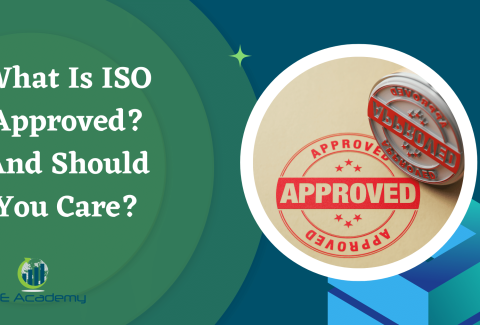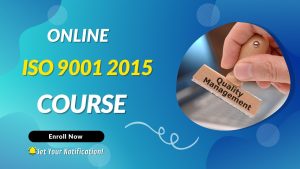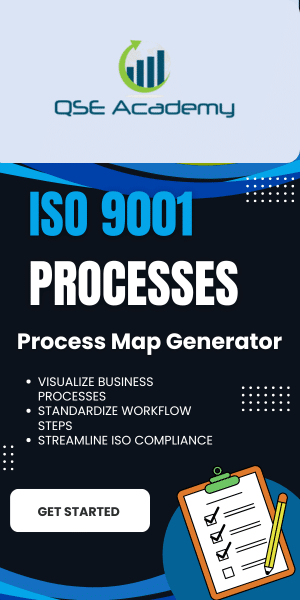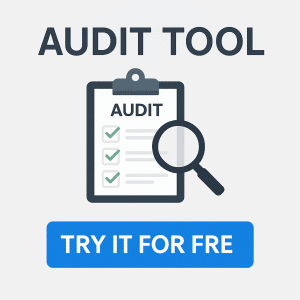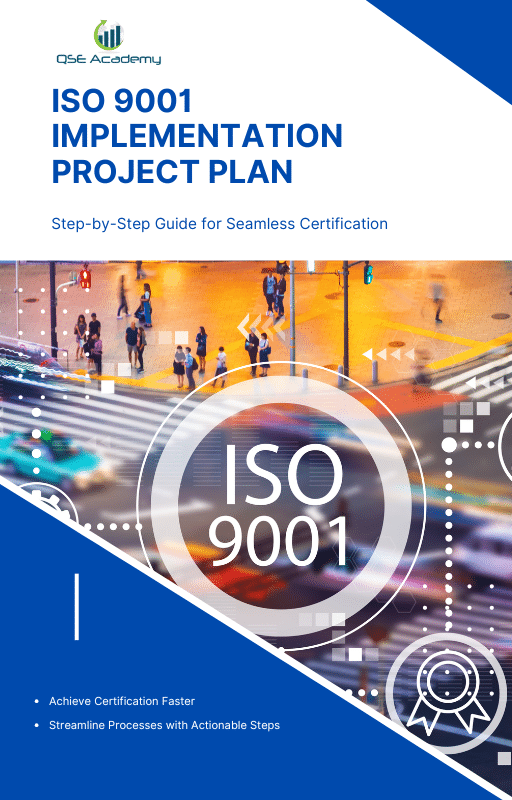How to Implement ISO 9001?
Last Updated on October 13, 2025 by Hafsa J.
How to Implement ISO 9001?
If you’ve been hearing about ISO 9001 and wondering how it could transform your organization, you’re not alone. Businesses across the world turn to this internationally recognized standard to improve quality management systems (QMS) and deliver better products or services. But the real question is: How do you implement ISO 9001 effectively?
Don’t worry—it’s not as complicated as it sounds. In this article, we’ll walk you through the process of how to implement ISO 9001, step by step, in a way that’s straightforward and achievable. Whether you’re a small business or a large enterprise, this guide will help you get started on your journey to better quality and happier customers.
Let’s start with the basics. First, we’ll look at what ISO 9001 is and why implementing it could be one of the smartest decisions your organization ever makes.
What is ISO 9001 and Why Does It Matter?
Before diving into the steps on how to implement ISO 9001, let’s make sure we’re on the same page about what ISO 9001 actually is and why it’s so valuable. Think of it as a trusted recipe for running your business more effectively—one that’s been tried and tested by companies all over the world.
Understanding ISO 9001
At its core, ISO 9001 is an internationally recognized standard for quality management systems (QMS). It provides a framework for businesses to deliver products and services that consistently meet customer expectations. But it’s more than just a checklist—it’s about creating a culture of quality and continuous improvement throughout your organization.
Here’s what makes ISO 9001 special:
- It’s designed to be flexible, meaning it can work for any type of organization, regardless of size or industry.
- It’s focused on building systems that help your business run smoothly and efficiently.
- It’s all about the customer—meeting their needs, solving their problems, and keeping them happy.
Example:
Imagine a small e-commerce business. By implementing ISO 9001, they can standardize their order fulfillment process, reduce errors, and ensure customers receive the right products on time. That’s the kind of impact ISO 9001 can have!
The Benefits of ISO 9001
So, why should you care about how to implement ISO 9001? Because the benefits are huge—not just for your business but for your customers, employees, and stakeholders as well.
Here’s what ISO 9001 can do for you:
- Boost Customer Satisfaction: By improving the quality of your products or services, you’ll create happier, more loyal customers.
- Streamline Processes: ISO 9001 helps you eliminate inefficiencies, saving time and money.
- Enhance Credibility: Certification shows customers and partners that you’re serious about quality.
- Foster Continuous Improvement: The framework encourages you to regularly review and refine your processes.
- Attract More Opportunities: Many companies prefer working with ISO 9001-certified suppliers, giving you a competitive edge.
Example:
A manufacturing company certified in ISO 9001 could attract more clients by showcasing its consistent quality and reliable processes, while also reducing production errors and waste.
Why ISO 9001 Matters Today
In today’s fast-paced world, businesses that prioritize quality and efficiency are the ones that thrive. Customers expect reliable products and services, and ISO 9001 gives you the tools to deliver just that. It’s not just about staying competitive—it’s about building trust and a strong reputation.
Whether you’re a startup looking to grow or an established company aiming to refine your operations, understanding how to implement ISO 9001 is the first step toward a brighter, more efficient future.
Now that we’ve covered the “what” and “why,” let’s move on to the “how.” In the next section, we’ll dive into a step-by-step guide on how to implement ISO 9001, so you can start building a quality management system that works for you. Let’s get started!
How to Implement ISO 9001: A Step-by-Step Guide
Now that we know what ISO 9001 is and why it’s important, let’s dive into the details of how to implement ISO 9001 in your organization. Don’t worry—it’s not as complicated as it might sound. With a clear plan and the right approach, you can create a quality management system (QMS) that improves your business operations and sets you apart from the competition.
Here’s a step-by-step guide to help you along the way.
1. Conduct a Gap Analysis
The first step in learning how to implement ISO 9001 is to assess where you currently stand. This is called a gap analysis, and it helps you identify what you’re already doing well and where you need improvements to meet ISO 9001 requirements.
How to Conduct a Gap Analysis:
- Review your existing processes and procedures.
- Compare them to the requirements outlined in the ISO 9001 standard.
- Create a list of gaps—areas that need attention or updates.
Example:
A retail store might discover that while their inventory tracking is efficient, they lack a formal process for handling customer complaints—an area they’ll need to address during implementation.
2. Secure Management Commitment
Successful ISO 9001 implementation starts from the top. Leadership plays a key role in driving the process, setting the tone, and ensuring everyone is on board.
What Management Needs to Do:
- Communicate the importance of ISO 9001 to the team.
- Allocate resources, such as time, budget, and training.
- Lead by example, showing a commitment to quality improvement.
Example:
The CEO of a small tech startup might hold a company-wide meeting to explain why they’re implementing ISO 9001 and how it will benefit the organization and its customers.
3. Create an Implementation Plan
Once you’ve identified your gaps and secured leadership support, the next step is to create a detailed implementation plan. This plan will serve as your roadmap for how to implement ISO 9001 effectively.
What to Include in Your Plan:
- Specific objectives for achieving certification.
- A timeline with milestones for key tasks.
- Assigned responsibilities for team members or departments.
Example:
A manufacturing company could set a goal to complete their internal audit within six months and assign specific team members to handle documentation updates and training.
4. Train Your Team
Your employees are critical to the success of ISO 9001. Make sure everyone understands what the standard is, why it matters, and how their role fits into the bigger picture.
How to Train Your Team:
- Organize workshops or training sessions on ISO 9001 principles.
- Provide clear instructions on how to follow new processes or use updated systems.
- Encourage open communication so employees feel comfortable asking questions.
Example:
A healthcare clinic might train its staff on new patient data tracking procedures, emphasizing how these changes improve both compliance and patient care.
5. Document Your Processes
One of the key requirements of ISO 9001 is clear and comprehensive documentation. This includes policies, procedures, and records that demonstrate how your QMS operates.
What to Document:
- Your quality policy and objectives.
- Procedures for core processes, like production, service delivery, and customer feedback.
- Records of audits, corrective actions, and performance evaluations.
Example:
An e-commerce business could create a documented process for handling returns and exchanges, ensuring consistency and customer satisfaction.
6. Implement and Monitor
With your team trained and your processes documented, it’s time to put your QMS into action. Start implementing the changes and monitor their effectiveness.
How to Monitor Progress:
- Regularly review key performance indicators (KPIs) related to quality objectives.
- Conduct internal audits to ensure compliance with ISO 9001.
- Use feedback from employees and customers to identify areas for improvement.
Example:
A logistics company might track delivery times as a KPI to ensure they’re meeting customer expectations and continuously improving their process.
Why This Process Works
By following these steps, you’ll not only meet the requirements of ISO 9001 but also create a QMS that genuinely improves your operations. The goal isn’t just to pass an audit—it’s to make your business more efficient, reliable, and customer-focused.
In the next section, we’ll talk about the role of internal audits in the implementation process and how they help you stay on track. Let’s keep going!
The Role of Internal Audits in ISO 9001 Implementation
If you’re serious about learning how to implement ISO 9001, one of the most important tools in your toolbox is the internal audit. Think of it as a rehearsal before the big show—it helps you fine-tune your processes, spot areas for improvement, and ensure you’re fully prepared for the certification audit.
Let’s dive into why internal audits matter, how they work, and how you can make the most of them.
Why Internal Audits Are Important
Internal audits are a core requirement of ISO 9001, but they’re not just about ticking a box—they’re about making sure your quality management system (QMS) is working the way it should.
Here’s why they’re so valuable:
- Spot Nonconformities Early: Internal audits help you identify gaps or issues before an external auditor does.
- Drive Continuous Improvement: By reviewing your processes, you’ll find ways to improve efficiency and effectiveness.
- Build Confidence: Regular audits show that you’re committed to maintaining high standards.
Example:
A retail chain conducting internal audits might discover inconsistencies in how different stores handle customer complaints. Fixing this before the certification audit ensures compliance and improves customer satisfaction.
How to Conduct an Effective Internal Audit
If you’re wondering how to implement ISO 9001 successfully, mastering the internal audit process is key. Here’s a simple guide to help you:
1. Plan Your Audit:
- Define the scope: Which processes or departments will you review?
- Set objectives: Are you checking for compliance, process efficiency, or both?
- Create a schedule: Make sure audits are regular and cover all areas of your QMS.
Example:
A tech company might plan to audit its software development process this month and its customer support process next month.
2. Use a Checklist:
- Base your checklist on the ISO 9001 requirements and your organization’s specific processes.
- Include key areas like leadership, customer satisfaction, and corrective actions.
Example:
An audit checklist for a logistics company could include points like “Are delivery timelines monitored and documented?” and “Are nonconformities addressed promptly?”
3. Gather Evidence:
- Interview employees to ensure they understand their roles within the QMS.
- Review documents, such as procedures, records, and performance data.
- Observe processes in action to confirm they align with documented procedures.
Example:
During an audit, a manufacturing company might observe how workers follow safety protocols on the production line to ensure compliance.
4. Report Findings:
- Highlight what’s working well—this builds morale and reinforces good practices.
- Document any nonconformities or areas for improvement, with clear recommendations.
Example:
An internal audit report for a healthcare clinic might note excellent patient feedback tracking but recommend clearer documentation of corrective actions for complaints.
5. Take Action:
- Use the audit findings to implement corrective actions and improve processes.
- Track progress and ensure all issues are resolved before the certification audit.
How Internal Audits Support ISO 9001 Implementation
Internal audits aren’t just about finding problems—they’re about building a stronger, more reliable QMS. By conducting regular audits, you’ll:
- Gain confidence in your compliance with ISO 9001.
- Create a culture of accountability and improvement.
- Be better prepared for external audits and certification.
Example:
A hotel that conducts thorough internal audits might streamline its check-in process, improving both compliance and guest satisfaction.
Why Internal Audits Are Essential
If you’re committed to understanding how to implement ISO 9001, internal audits are a must. They’re your chance to refine your systems, engage your team, and demonstrate your commitment to quality.
In the next section, we’ll explore what to expect during the certification audit and how to prepare for it. Stay tuned—you’re almost there!
Preparing for the Certification Audit
You’ve done the hard work of implementing a quality management system (QMS), conducted internal audits, and made the necessary improvements. Now it’s time for the certification audit—the final step in your journey to ISO 9001 certification. But what should you expect, and how can you ensure success? Let’s break it down so you can feel fully prepared.
What is a Certification Audit?
A certification audit is conducted by an external certification body to verify that your QMS meets the requirements of ISO 9001. This is the moment you’ve been working toward, where an independent auditor evaluates your processes, documentation, and overall compliance.
The certification audit typically happens in two stages:
- Stage 1 Audit: A review of your documentation and readiness for the full audit.
- Stage 2 Audit: A detailed evaluation of your QMS in action, including employee interviews and process observations.
Example:
For a manufacturing company, the auditor might review production line procedures (Stage 1) and then observe how those procedures are followed during operations (Stage 2).
How to Prepare for the Certification Audit
If you’re wondering how to implement ISO 9001 successfully and pass the certification audit, preparation is key. Here’s what you need to do:
1. Review Your Documentation
Your documentation serves as proof that your QMS meets ISO 9001 requirements. Make sure it’s complete, accurate, and up to date.
What to Check:
- Quality policies and objectives.
- Process flowcharts and procedures.
- Records of internal audits, corrective actions, and performance monitoring.
Example:
An e-commerce business might compile records of customer feedback, order fulfillment processes, and corrective actions taken for shipping delays.
2. Conduct a Pre-Audit Assessment
Think of this as a final dress rehearsal before the certification audit. A pre-audit assessment, whether conducted internally or by a consultant, helps you identify and address any remaining gaps.
What to Focus On:
- Are all nonconformities from internal audits resolved?
- Is everyone in your team clear about their roles and responsibilities?
- Are key performance indicators (KPIs) aligned with your quality objectives?
Example:
A healthcare clinic might use a pre-audit to double-check compliance with patient data handling protocols and staff training records.
3. Train Your Team
Your employees play a vital role in the certification audit. Auditors may ask them questions or observe their work, so it’s important that everyone understands the QMS and their part in it.
Tips for Training:
- Conduct a refresher session on ISO 9001 principles and your organization’s quality policies.
- Provide examples of questions auditors might ask and how to answer confidently.
- Reassure employees that the audit is a collaborative process, not a test.
Example:
A retail chain might train store managers to explain how they track customer complaints and implement corrective actions.
4. Organize and Simplify Access to Records
Auditors will need access to specific records during the audit, so make sure everything is well-organized and easy to find.
How to Stay Organized:
- Create a centralized location for all documentation, either digitally or physically.
- Use clear labeling and categorization for quick access.
- Assign a point person to assist the auditor during the review.
Example:
A construction company might prepare a binder with records of supplier evaluations, safety inspections, and corrective actions to streamline the auditor’s review process.
What to Expect During the Certification Audit
During the audit, the auditor will:
- Review your documentation to ensure it meets ISO 9001 standards.
- Observe processes and interview employees to confirm compliance.
- Identify any nonconformities and provide recommendations for improvement.
If nonconformities are found, don’t panic! You’ll have the opportunity to address them and resubmit evidence of compliance.
Celebrate Your Success
Once you pass the certification audit, it’s time to celebrate! Achieving ISO 9001 certification is a significant milestone that demonstrates your commitment to quality.
Example:
An IT services company might announce their certification on their website and share it with clients to highlight their dedication to delivering exceptional service.
Why Preparation is Key
Understanding how to implement ISO 9001 isn’t just about creating a great QMS—it’s also about being fully prepared for the certification audit. By organizing your records, training your team, and conducting pre-audit assessments, you’ll set yourself up for success.
In the next section, we’ll talk about common challenges organizations face during implementation and how to overcome them. Let’s keep going—you’re almost there!
Common Challenges When Implementing ISO 9001
Implementing ISO 9001 is a rewarding journey, but like any worthwhile endeavor, it comes with its challenges. If you’ve been wondering how to implement ISO 9001 while overcoming potential roadblocks, don’t worry—you’re not alone. Many organizations face similar challenges, and the good news is that with the right strategies, these hurdles are completely manageable.
Let’s explore some common challenges and how you can tackle them effectively.
1. Resistance to Change
Change can be hard, especially when it involves new processes or systems. Employees may feel uncertain about why ISO 9001 is being implemented and how it will affect their day-to-day roles.
Why It Happens:
- Fear of extra work or losing autonomy.
- Misunderstanding the benefits of ISO 9001.
- Lack of clear communication from leadership.
How to Overcome It:
- Communicate early and often about the purpose and benefits of ISO 9001.
- Involve employees in the implementation process so they feel ownership and engagement.
- Offer training sessions to help them understand their role in the QMS.
Example:
A manufacturing company might host an open Q&A session where employees can ask questions and share concerns about how ISO 9001 will impact their work.
2. Time and Resource Constraints
Implementing ISO 9001 requires time, effort, and resources, which can be challenging for organizations juggling multiple priorities.
Why It Happens:
- Limited staff availability to work on documentation or audits.
- Competing demands from other business initiatives.
- Budget constraints for training or external consulting.
How to Overcome It:
- Create a realistic timeline that spreads out tasks to avoid overwhelming your team.
- Assign a dedicated project manager or small team to oversee implementation.
- Consider using ISO 9001 templates or seeking help from an external consultant to streamline the process.
Example:
A small retail business could dedicate one day per week to focus on ISO 9001 tasks, allowing them to maintain daily operations while working toward certification.
3. Understanding the Requirements
ISO 9001’s requirements can seem overwhelming at first, especially if you’re unfamiliar with terms like “context of the organization” or “risk-based thinking.”
Why It Happens:
- Lack of experience with quality management systems.
- Unfamiliarity with ISO 9001’s terminology and structure.
- Misinterpretation of certain clauses or requirements.
How to Overcome It:
- Break the standard into smaller, manageable sections and tackle them one at a time.
- Use ISO 9001 guides, checklists, and online resources to clarify requirements.
- Consult with an ISO expert or attend training sessions to build your understanding.
Example:
A healthcare clinic implementing ISO 9001 might focus first on patient feedback processes before moving on to risk management, breaking the process into digestible steps.
4. Keeping Documentation Up to Date
One of the key steps in how to implement ISO 9001 is maintaining accurate and up-to-date documentation, which can feel like a lot of work if your processes aren’t well-organized.
Why It Happens:
- Processes aren’t clearly defined or documented.
- Lack of a centralized system to manage records.
- Employees aren’t sure who’s responsible for updating documentation.
How to Overcome It:
- Implement a centralized system for managing QMS documents, whether digital or physical.
- Assign responsibility for each document to a specific team member or department.
- Schedule regular reviews to ensure documentation stays current.
Example:
A logistics company could use cloud-based software to store and update QMS documents, making it easy for employees to access and edit them as needed.
5. Sustaining Momentum After Certification
It’s one thing to achieve ISO 9001 certification, but maintaining compliance and continuously improving your QMS is an ongoing effort.
Why It Happens:
- Teams revert to old habits after the certification audit.
- Lack of regular reviews or audits to monitor progress.
- Leadership doesn’t emphasize the importance of maintaining the system.
How to Overcome It:
- Schedule regular internal audits to keep processes on track.
- Set new quality objectives each year to drive continuous improvement.
- Keep leadership engaged by showing how the QMS supports business goals.
Example:
A tech startup might set quarterly goals to improve customer response times, using ISO 9001 principles to guide their efforts and keep the system active.
Why Overcoming These Challenges Matters
Facing challenges during implementation is completely normal, but how you respond to them makes all the difference. By addressing these obstacles head-on, you’ll not only succeed in implementing ISO 9001 but also create a QMS that delivers real value to your organization.
In the next section, we’ll explore tips for ensuring long-term success with ISO 9001, so you can keep reaping the benefits well into the future. Let’s keep going—you’re doing great!
Tips for Long-Term Success with ISO 9001
Achieving ISO 9001 certification is a major milestone, but the journey doesn’t end there. To truly maximize the benefits, you need to focus on sustaining and improving your quality management system (QMS) over time. Wondering how to keep the momentum going? Here are some practical tips to ensure long-term success with ISO 9001.
1. Foster a Culture of Continuous Improvement
One of the core principles of ISO 9001 is continuous improvement, and this mindset should be part of your organization’s DNA. It’s not just about maintaining the QMS—it’s about constantly looking for ways to make things better.
How to Promote Continuous Improvement:
- Encourage employees at all levels to suggest ideas for improving processes.
- Regularly review performance data and identify areas for growth.
- Set new quality objectives each year to keep your team focused and motivated.
Example:
A retail business might set a goal to reduce customer return rates by 10% over the next year by improving product quality and providing clearer usage instructions.
2. Involve Your Team
Your employees are the backbone of your QMS, so keeping them engaged is essential for long-term success. When everyone understands their role in maintaining ISO 9001 standards, your QMS becomes a collaborative effort.
Ways to Keep Your Team Engaged:
- Provide ongoing training on ISO 9001 principles and updates.
- Celebrate achievements, such as hitting quality targets or completing successful audits.
- Include employees in discussions about process improvements and quality objectives.
Example:
A healthcare clinic might hold quarterly meetings where staff can share feedback on current processes and brainstorm solutions to improve patient care.
3. Conduct Regular Internal Audits
If you’re serious about maintaining compliance, regular internal audits are non-negotiable. They help you identify small issues before they become big problems and ensure your QMS continues to meet ISO 9001 requirements.
How to Schedule and Conduct Audits:
- Plan audits on a regular basis, such as quarterly or semi-annually.
- Rotate responsibilities so different team members get involved in the auditing process.
- Use audit findings to drive corrective actions and process improvements.
Example:
A logistics company might conduct an internal audit to ensure delivery times are being accurately tracked and analyzed, leading to better customer service.
4. Monitor Key Performance Indicators (KPIs)
To know if your QMS is delivering results, you need to track measurable outcomes. KPIs aligned with your quality objectives will give you a clear picture of how well your system is performing.
KPIs to Monitor:
- Customer satisfaction scores.
- On-time delivery rates.
- Error or defect rates.
- Time taken to resolve customer complaints.
Example:
An IT services firm might track response times for technical support requests, using the data to identify trends and improve service delivery.
5. Stay Updated on ISO Standards
ISO standards evolve over time, and staying informed about changes ensures your QMS remains compliant and effective.
How to Stay Updated:
- Subscribe to ISO newsletters or updates from your certification body.
- Attend industry workshops or webinars on quality management.
- Regularly review your QMS to ensure it aligns with the latest version of ISO 9001.
Example:
A manufacturing company could attend a workshop on the latest ISO 9001 updates to learn about new best practices for quality control.
6. Keep Leadership Involved
Strong leadership is vital for maintaining the momentum of ISO 9001. When management stays actively involved, it sets the tone for the entire organization.
How Leadership Can Stay Engaged:
- Regularly review QMS performance and audit results.
- Provide resources and support for continuous improvement initiatives.
- Communicate the importance of ISO 9001 to employees and stakeholders.
Example:
A CEO of a tech startup might hold monthly meetings with department heads to discuss quality performance metrics and brainstorm solutions for improvement.
Why Long-Term Success Matters
Sustaining ISO 9001 isn’t just about maintaining compliance—it’s about creating a culture of excellence that drives your organization forward. By focusing on continuous improvement, engaging your team, and staying proactive, you’ll not only meet the standard but also reap its full benefits.
In the next section, we’ll wrap things up by summarizing why ISO 9001 is a smart investment for your organization and encouraging you to take the next step toward implementation. Let’s finish strong!
Conclusion: Why Implementing ISO 9001 is a Smart Move
So, we’ve covered everything from understanding the basics to tips for long-term success. By now, you might be asking yourself: “Is implementing ISO 9001 really worth it?” The short answer is yes—100% yes. Learning how to implement ISO 9001 isn’t just about compliance; it’s about transforming the way your organization operates and setting yourself up for sustainable success.
The Value of ISO 9001 for Your Organization
When you implement ISO 9001, you’re not just adopting a standard—you’re investing in a system that improves your processes, builds customer trust, and helps your business stand out in a competitive market.
Here’s why it’s a smart move:
- Enhanced Quality: Consistently deliver products or services that meet or exceed customer expectations.
- Operational Efficiency: Streamline processes to save time, reduce costs, and minimize errors.
- Increased Credibility: Certification demonstrates to clients and partners that your organization is reliable and professional.
- Continuous Improvement: Build a culture that encourages innovation and adaptability.
Example:
A small café that implements ISO 9001 might not only improve its customer service but also attract new clients by showcasing its commitment to quality.
Why Now is the Right Time
The sooner you start learning how to implement ISO 9001, the sooner you’ll see the benefits. Whether you’re trying to improve internal processes, expand your business, or gain a competitive edge, ISO 9001 can help you get there.
Think about this:
- Customers today value reliability and consistency more than ever.
- Many large organizations prefer to work with ISO-certified suppliers, opening new opportunities for your business.
- The standard is designed to adapt to businesses of all sizes and industries, so it’s never too early (or too late) to start.
Your Next Steps
If you’re ready to take the leap, here’s how to get started:
- Conduct a gap analysis to understand where you stand and what you need to work on.
- Build a strong team and involve leadership to drive the implementation process.
- Follow the step-by-step guide we discussed earlier to create and sustain a QMS that works for your organization.
- Seek support if needed—whether from consultants, online resources, or training programs.
Example:
A tech startup might begin its ISO 9001 journey by assigning a project manager to oversee implementation and using online templates to kickstart documentation.
The Big Picture
At its heart, ISO 9001 isn’t just a standard—it’s a strategy for building a better business. By taking the time to implement it thoughtfully, you’re showing your customers, employees, and stakeholders that you’re committed to excellence. And the benefits? They go beyond certification—they translate to growth, loyalty, and long-term success.
So, are you ready to start your ISO 9001 journey? With the right mindset and approach, you’ve got everything it takes to make it happen. Let’s make quality your new standard—it’s worth it!
Ready to move from ISO 9001 theory to implementation?
Get the exact tools you need to write your documentation, train your team, map your processes, and pass your audit—without wasted time or guesswork.

make ISO standards less intimidating and more approachable for everyone.
Whether it’s ISO 9001, ISO 22000, or the cosmetics-focused ISO 22716, I’ve spent my career
turning complex jargon into clear, actionable steps that businesses can actually use.
I’m not here to call myself an expert—I prefer “enthusiast” because I truly love what I do.
There’s something incredibly rewarding about helping people navigate food safety and quality management systems
in a way that feels simple, practical, and even enjoyable.
When I’m not writing about standards, you’ll probably find me playing Piano 🎹, connecting with people, or diving into my next big project💫.
I’m an engineer specialized in the food and agricultural industry
I have a Master’s in QHSE management and over 12 years of experience as a Quality Manager
I’ve helped more than 15 companies implement ISO 9001, ISO 22000, ISO 22716, GMP, and other standards
My clients include food producers, cosmetics manufacturers, laboratories, and service companies
I believe quality systems should be simple, useful, and efficient.

